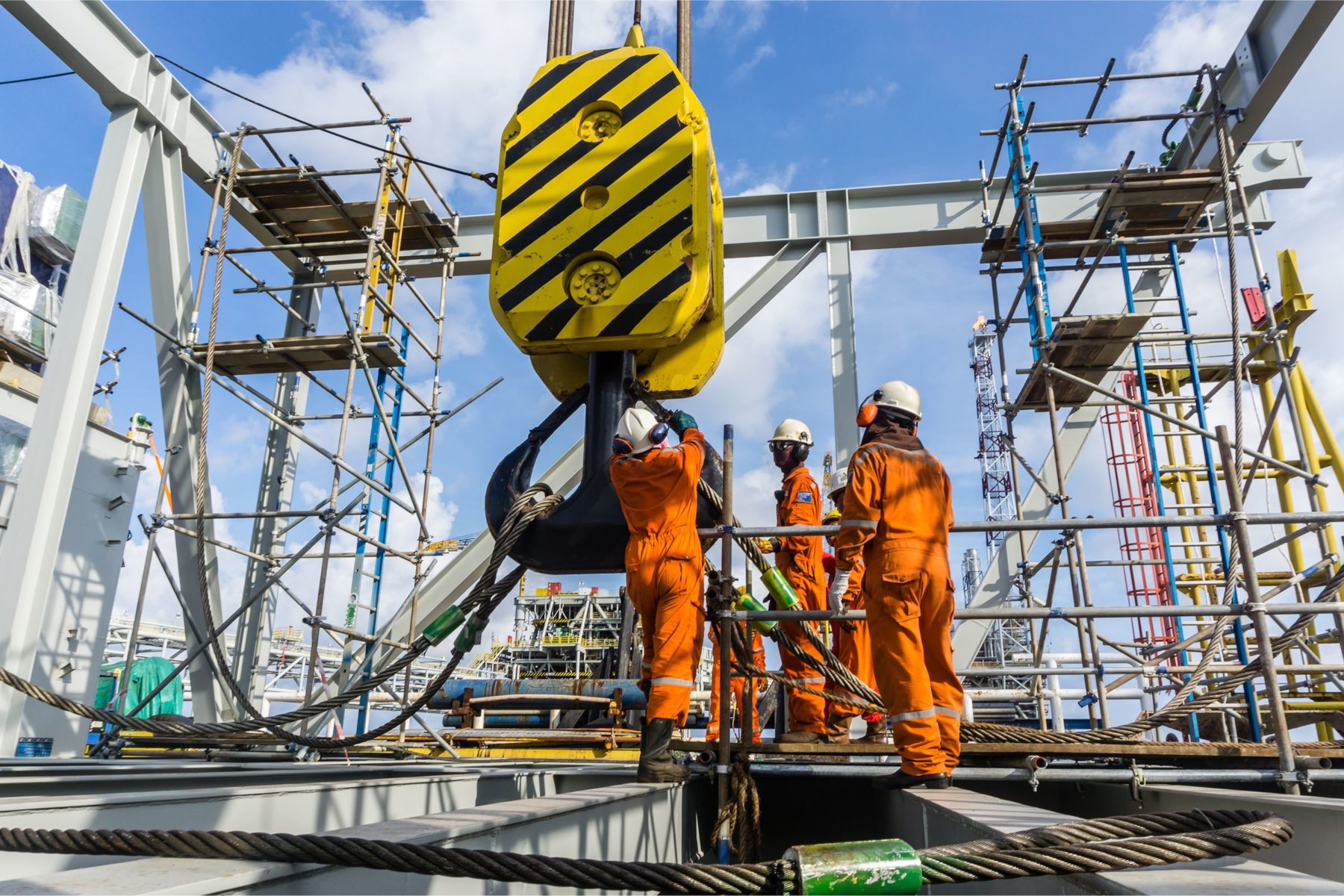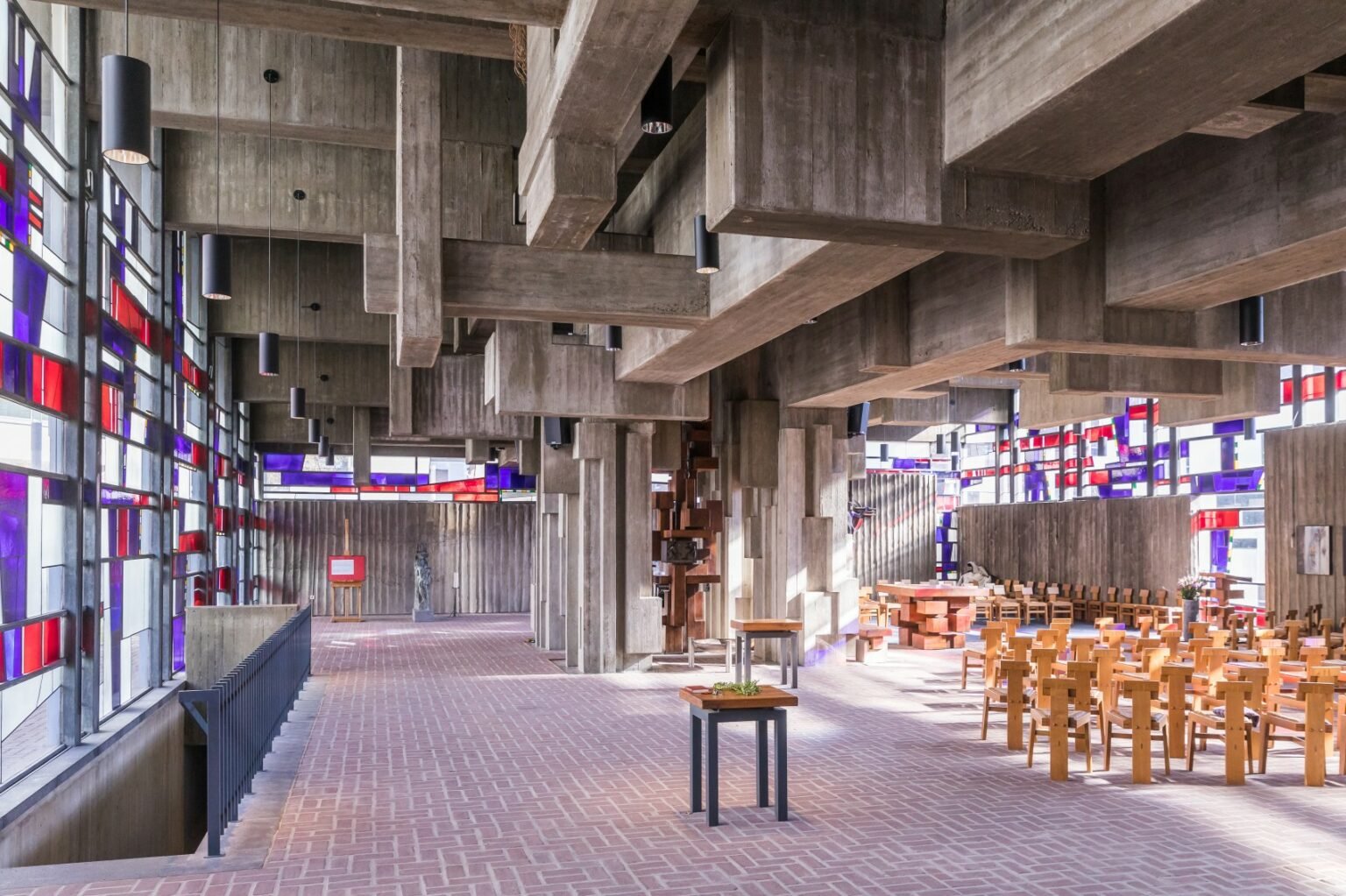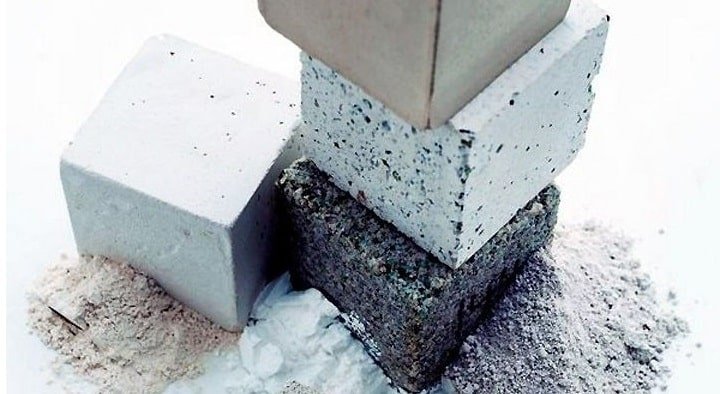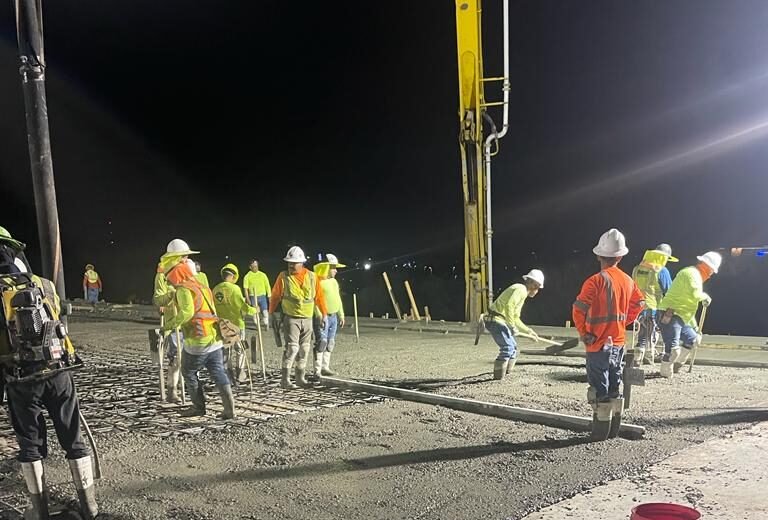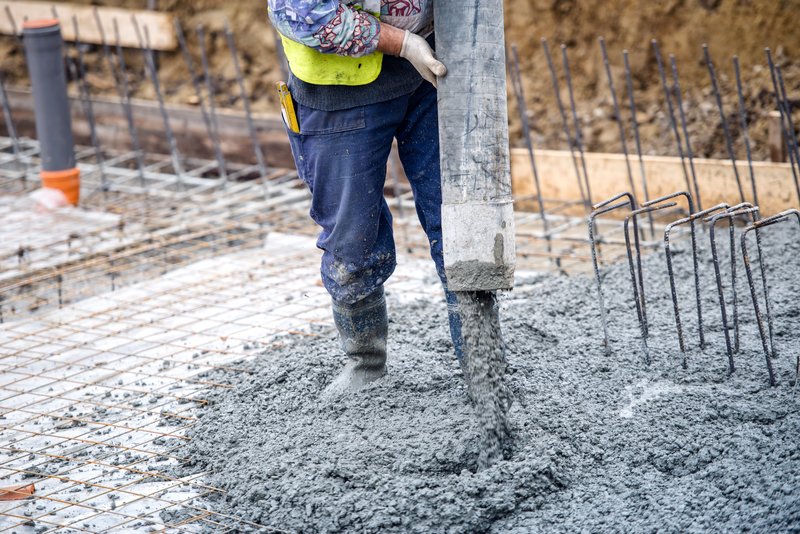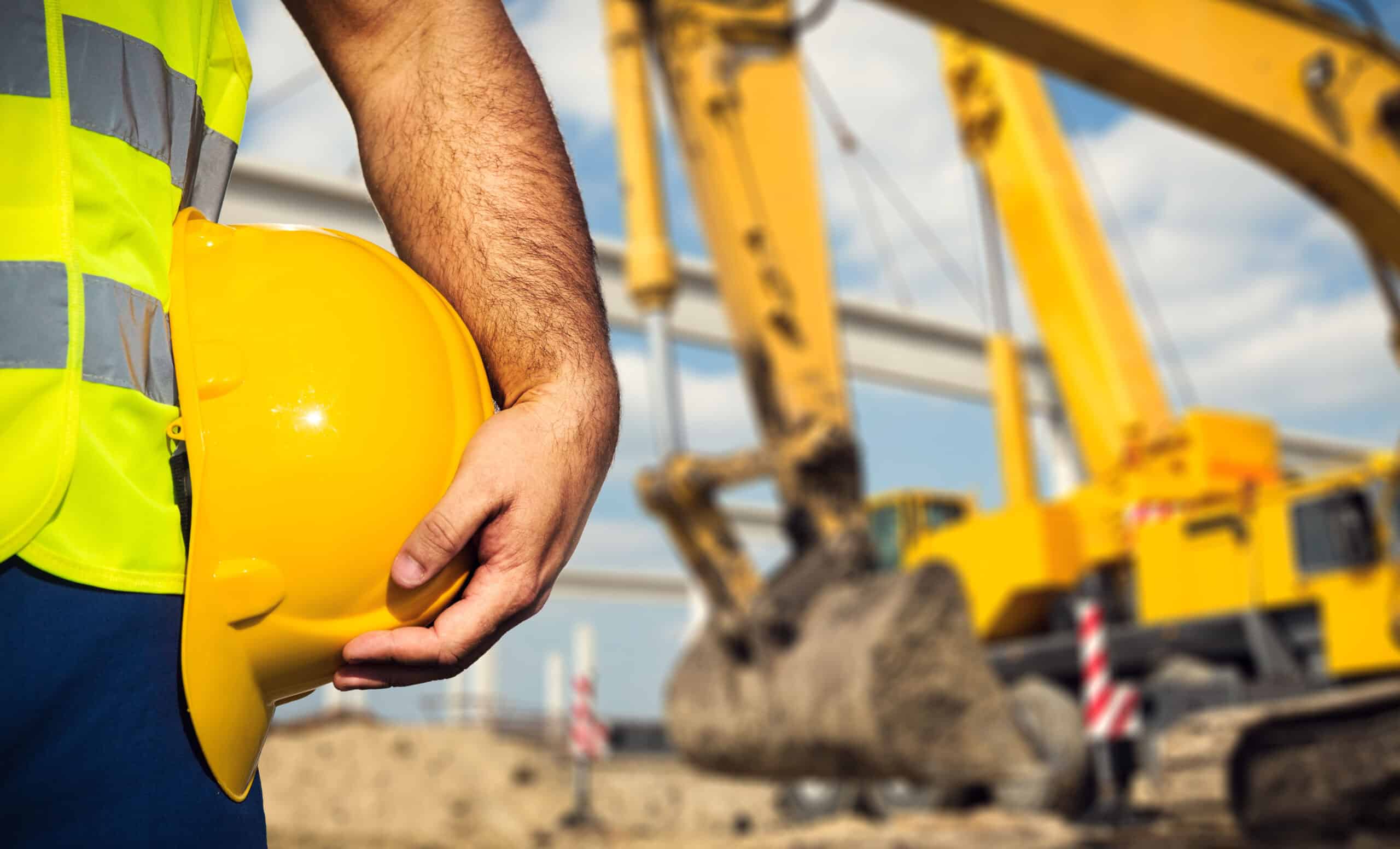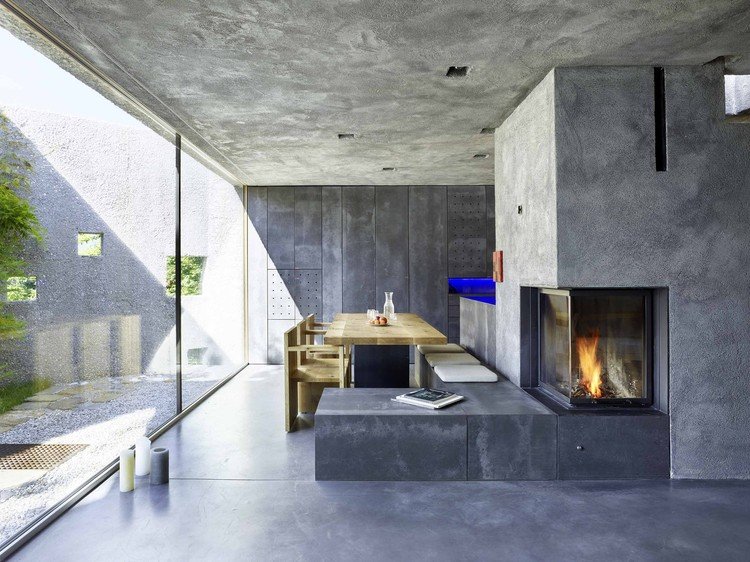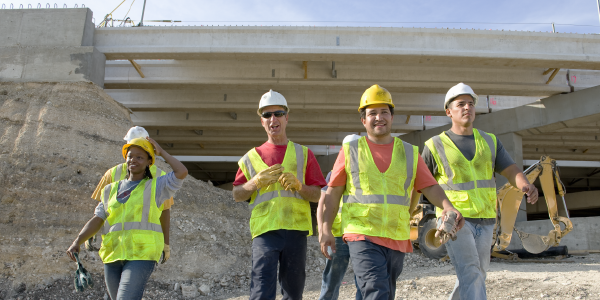Essential Concrete Safety Tips: Protecting Workers on the Job Site Working with concrete is a fundamental aspect of the construction industry, but it comes with significant safety risks. Ensuring worker protection requires knowledge, proper equipment, and strict adherence to safety protocols. In this article, we will explore key safety tips to prevent injuries and improve overall job site safety. Understanding the Risks of Working with Concrete Concrete work involves various hazards, including chemical burns, respiratory issues, and physical injuries. Some of the most common risks include: Skin and Eye Irritation: Wet concrete is highly alkaline and can cause severe burns if it comes into prolonged contact with the skin. Respiratory Issues: Inhalation of silica dust from concrete cutting or grinding can lead to lung diseases such as silicosis. Musculoskeletal Injuries: Lifting heavy materials without proper technique can cause strains and injuries. Slips, Trips, and Falls: Unstable surfaces and spilled materials can increase the risk of accidents. Personal Protective Equipment (PPE) for Concrete Work To mitigate these risks, workers should always wear the appropriate personal protective equipment (PPE), including: Gloves: Alkali-resistant gloves to prevent burns and skin irritation. Safety Glasses or Goggles: To protect the eyes from splashes and dust. Respirators or Dust Masks: Essential when cutting, drilling, or grinding concrete. Long-Sleeved Shirts and Pants: To reduce skin exposure to wet concrete. Steel-Toe Boots: To protect feet from falling objects and sharp debris. Safe Handling of Concrete Materials Proper handling techniques can reduce the risk of injuries. Consider these best practices: Use Mechanical Aids: When possible, use forklifts, wheelbarrows, or cranes to move heavy concrete loads. Lift with Proper Form: Bend your knees and keep your back straight when lifting manually. Store Materials Securely: Prevent hazards by keeping work areas organized and free of obstacles. Preventing Exposure to Silica Dust Silica dust exposure is a major concern in concrete work. To minimize risks: Use Wet Cutting Methods: Applying water to cutting surfaces reduces dust. Implement Local Exhaust Ventilation (LEV): Proper ventilation helps remove airborne particles. Wear Proper Respiratory Protection: When dust exposure cannot be avoided, use N95 respirators or higher-grade masks. Best Practices for Pouring and Mixing Concrete Safely The process of mixing and pouring concrete presents unique hazards. Follow these guidelines for safe operations: Work in Well-Ventilated Areas: Reducing fume buildup minimizes respiratory risks. Use Protective Barriers: Prevent unauthorized personnel from entering the work zone. Monitor Weather Conditions: Avoid working in extreme heat or rain, which can affect concrete setting and worker safety. Emergency Procedures and First Aid Even with strict safety measures, accidents can still occur. Employers should: Provide Safety Training: Workers should know how to handle chemical burns, dust exposure, and equipment-related injuries. Keep Emergency Washing Stations Available: Quick access to clean water can prevent severe chemical burns. Encourage Immediate Reporting: Workers should report unsafe conditions or injuries immediately. Conclusion Safety in concrete construction is not just about compliance—it’s about protecting lives. By following these essential safety tips, using proper PPE, and implementing best practices, workers can significantly reduce risks and create a safer job site. Prioritizing safety leads to higher efficiency, fewer accidents, and better overall productivity in the industry. Recents post concrete work sustainable Essential Concrete Safety Tips: Protecting Workers on the Job Site Decorative Concrete: Trends in Modern Finishes for 2025 Concrete is no longer just a construction material — it’s become a… Read More Decorative Concrete: Trends in Modern Finishes for 2025 Decorative Concrete: Trends in Modern Finishes for 2025 Concrete is no longer just a construction material — it’s become a… Read More Sustainable Concrete Innovations in 2025: The Future of Eco-Friendly Construction Sustainable Concrete Innovations in 2025: The Future of Eco-Friendly Construction In 2025, the construction industry continues its transformation towards sustainability,… Read More The Science Behind Concrete Cracking: Causes and Solutions The Science Behind Concrete Cracking: Causes and Solutions Cracks in concrete are one of the most common issues in construction,… Read More Top 10 Concrete Myths Debunked: What Every Contractor Should Know Top 10 Concrete Myths Debunked: What Every Contractor Should Know Concrete is one of the most widely used construction materials,… Read More How to Plan Concrete Pouring in Large Construction Projects How to Plan Concrete Pouring in Large Construction Projects Pouring concrete in large-scale construction projects requires meticulous planning, logistical coordination,… Read More Load More End of Content.
Decorative Concrete: Trends in Modern Finishes for 2025
Decorative Concrete: Trends in Modern Finishes for 2025 Concrete is no longer just a construction material — it’s become a centerpiece in modern design. As we move into 2025, decorative concrete is taking on new forms, offering style, durability, and customization that fits both residential and commercial spaces. Let’s dive into the latest trends transforming concrete from industrial to inspirational. The Rise of Decorative Concrete Concrete has evolved beyond its utilitarian roots. Homeowners, designers, and architects are embracing its versatility to create stunning surfaces for floors, walls, countertops, patios, and more. Decorative concrete offers a unique blend of strength and style, making it a sought-after choice for modern designs. Polished Concrete with a High Gloss Finish One of the hottest trends for 2025 is high-gloss polished concrete. This finish enhances the natural beauty of concrete, creating a sleek, reflective surface that’s easy to clean and incredibly durable. It’s perfect for modern living rooms, kitchens, and commercial spaces looking for an upscale, minimalist aesthetic. Textured Concrete Finishes For those seeking a more organic look, textured concrete is gaining traction. Techniques like broom finishes, exposed aggregate, and sandblasting create tactile surfaces that add depth and character. Textured concrete works beautifully in outdoor patios, walkways, or even as feature walls. Colored and Stained Concrete The days of dull gray concrete are long gone. In 2025, bold colors, earthy tones, and custom hues are on the rise. Acid stains, water-based dyes, and integral color mixing provide endless possibilities — from warm terracottas to cool ocean blues — to complement any space’s design palette. Concrete that Mimics Natural Materials Why choose between wood, stone, or tile when concrete can imitate them all? Advanced stamping and finishing techniques replicate the appearance of wood planks, slate, brick, or even marble — with the added benefit of concrete’s durability and lower maintenance. This trend is ideal for those wanting the look of natural materials without the cost or upkeep. Seamless Indoor-Outdoor Transitions Blurring the line between indoors and outdoors continues to dominate design trends. Decorative concrete creates a cohesive flow from interior floors to exterior patios or pool decks. Polished finishes inside and textured finishes outside provide both style and slip resistance, making it a practical yet elegant solution. Sustainable and Eco-Friendly Concrete Finishes Sustainability remains a priority for 2025. Eco-conscious homeowners and businesses are turning to decorative concrete for its longevity and energy efficiency. Polished concrete floors, for example, reflect light, reducing the need for artificial lighting. Additionally, low-VOC stains and sealers are gaining popularity, supporting healthier indoor air quality. Artistic and Custom Inlays Personalization is taking decorative concrete to the next level. From intricate geometric patterns to custom logos and designs, concrete can be transformed into a true work of art. Techniques like saw cutting, embedded materials, and custom staining allow for one-of-a-kind designs, making a bold statement in any space. Why Choose Decorative Concrete? Decorative concrete isn’t just about aesthetics — it’s about practicality. It’s durable, easy to maintain, and stands up to heavy traffic. Plus, with endless customization options, it suits any style, from modern minimalist to rustic charm. Whether you’re a homeowner looking to refresh your space or a business owner aiming to create a stunning first impression, decorative concrete offers an innovative, long-lasting solution that’s anything but ordinary. Ready to explore the latest concrete finishes for your next project? Let RGA Concrete help you bring these trends to life with precision, quality, and style. Recents post concrete work sustainable Decorative Concrete: Trends in Modern Finishes for 2025 Sustainable Concrete Innovations in 2025: The Future of Eco-Friendly Construction In 2025, the construction industry continues its transformation towards sustainability,… Read More Sustainable Concrete Innovations in 2025: The Future of Eco-Friendly Construction Sustainable Concrete Innovations in 2025: The Future of Eco-Friendly Construction In 2025, the construction industry continues its transformation towards sustainability,… Read More The Science Behind Concrete Cracking: Causes and Solutions The Science Behind Concrete Cracking: Causes and Solutions Cracks in concrete are one of the most common issues in construction,… Read More Top 10 Concrete Myths Debunked: What Every Contractor Should Know Top 10 Concrete Myths Debunked: What Every Contractor Should Know Concrete is one of the most widely used construction materials,… Read More How to Plan Concrete Pouring in Large Construction Projects How to Plan Concrete Pouring in Large Construction Projects Pouring concrete in large-scale construction projects requires meticulous planning, logistical coordination,… Read More How Workplace Safety Affects the Durability and Quality of Concrete in Construction Projects How Workplace Safety Affects the Durability and Quality of Concrete in Construction Projects Workplace safety is crucial not only for… Read More Load More End of Content.
Sustainable Concrete Innovations in 2025: The Future of Eco-Friendly Construction
Sustainable Concrete Innovations in 2025: The Future of Eco-Friendly Construction In 2025, the construction industry continues its transformation towards sustainability, with concrete playing a pivotal role. As one of the most widely used materials in construction, the traditional production of concrete has a significant environmental impact due to its carbon emissions. However, new innovations are emerging to make concrete eco-friendlier without compromising its strength and versatility. 1. Carbon-Negative Concrete: The Next Big Step Carbon-negative concrete is gaining traction as companies develop formulas that absorb more CO₂ than they emit during production. By incorporating industrial byproducts and carbon capture technologies, this innovation is poised to revolutionize the industry. Example: CarbonCure and other similar technologies inject captured CO₂ into concrete during mixing, turning it into a permanent mineral. 2. Bio-Concrete: Healing Itself Naturally Imagine concrete that repairs its own cracks! Bio-concrete uses bacteria that activate when exposed to water and oxygen, producing limestone that fills gaps and extends the lifespan of concrete structures. Benefit: Reduces maintenance costs and prevents structural failures over time. 3. Geopolymer Concrete: Reducing Cement Dependency Geopolymer concrete eliminates the need for traditional Portland cement by using alternative binders like fly ash and slag. Why It Matters: Reduces carbon emissions by up to 90% compared to conventional concrete. 4. Lightweight and Insulated Concrete Solutions Energy-efficient construction requires better insulation materials. New lightweight concrete formulations with advanced thermal properties help reduce heating and cooling costs. Trending Application: Ideal for green residential buildings and commercial projects focusing on energy savings. 5. Recycled Aggregate Concrete: Closing the Loop Construction waste is being repurposed to create recycled aggregate concrete, minimizing landfill waste while reducing the environmental impact of raw material extraction. Pro Tip: Ensure proper quality control to maintain strength and consistency in recycled mixes. Looking Ahead: Green Certifications and Compliance With growing environmental regulations and the push for net-zero goals, adopting sustainable concrete practices is not just a trend but a necessity. Recents post concrete work sustainable Sustainable Concrete Innovations in 2025: The Future of Eco-Friendly Construction Sustainable Concrete Innovations in 2025: The Future of Eco-Friendly Construction In 2025, the construction industry continues its transformation towards sustainability,… Read More The Science Behind Concrete Cracking: Causes and Solutions The Science Behind Concrete Cracking: Causes and Solutions Cracks in concrete are one of the most common issues in construction,… Read More Top 10 Concrete Myths Debunked: What Every Contractor Should Know Top 10 Concrete Myths Debunked: What Every Contractor Should Know Concrete is one of the most widely used construction materials,… Read More How to Plan Concrete Pouring in Large Construction Projects How to Plan Concrete Pouring in Large Construction Projects Pouring concrete in large-scale construction projects requires meticulous planning, logistical coordination,… Read More How Workplace Safety Affects the Durability and Quality of Concrete in Construction Projects How Workplace Safety Affects the Durability and Quality of Concrete in Construction Projects Workplace safety is crucial not only for… Read More Best Practices for Safety in Concrete Placement and Handling on Construction Sites Best Practices for Safety in Concrete Placement and Handling on Construction Sites Handling and placing concrete on a construction site… Read More Load More End of Content.
The Science Behind Concrete Cracking: Causes and Solutions
The Science Behind Concrete Cracking: Causes and Solutions Cracks in concrete are one of the most common issues in construction, but they are not always a sign of failure. Understanding the science behind why concrete cracks can help contractors prevent them and implement effective solutions. This article explores the primary causes of concrete cracking and offers practical strategies to address them. Common Causes of Concrete Cracking Shrinkage Cracks Explanation: As concrete dries, it naturally shrinks. If the shrinkage is restrained by the formwork or other materials, cracks can form. Solution: Use control joints to direct where cracks will occur, and apply a curing compound to reduce water evaporation. Thermal Cracking Explanation: Concrete expands and contracts with temperature changes. If the temperature fluctuation is too extreme, it can cause thermal cracking. Solution: Plan the pour during mild weather, and use temperature control measures like curing blankets. Overloading Explanation: When the load exceeds the capacity of the concrete, it leads to structural cracks. Solution: Ensure the concrete mix design matches the expected load, and reinforce it properly with rebar. Improper Mix Design Explanation: An incorrect water-to-cement ratio or poor aggregate quality can weaken the concrete, making it prone to cracking. Solution: Use a well-designed mix that suits the project’s specific needs. Subgrade Settlement Explanation: If the ground beneath the concrete shifts or settles, it can cause cracks in the slab. Solution: Properly compact the subgrade before pouring, and consider using a stable base layer. How to Prevent Cracks in Concrete Use Reinforcement: Adding rebar or wire mesh helps distribute the load and minimize cracking. Control Joints: Create control joints at regular intervals to allow for controlled cracking. Proper Curing: Ensure the concrete is cured correctly to maintain moisture and prevent rapid drying. Conclusion Concrete cracks are often inevitable, but understanding their causes can help you minimize them. With the right planning, materials, and techniques, contractors can create durable and long-lasting concrete structures that stand the test of time. Recents post concrete work sustainable The Science Behind Concrete Cracking: Causes and Solutions Top 10 Concrete Myths Debunked: What Every Contractor Should Know Concrete is one of the most widely used construction materials,… Read More Top 10 Concrete Myths Debunked: What Every Contractor Should Know Top 10 Concrete Myths Debunked: What Every Contractor Should Know Concrete is one of the most widely used construction materials,… Read More How to Plan Concrete Pouring in Large Construction Projects How to Plan Concrete Pouring in Large Construction Projects Pouring concrete in large-scale construction projects requires meticulous planning, logistical coordination,… Read More How Workplace Safety Affects the Durability and Quality of Concrete in Construction Projects How Workplace Safety Affects the Durability and Quality of Concrete in Construction Projects Workplace safety is crucial not only for… Read More Best Practices for Safety in Concrete Placement and Handling on Construction Sites Best Practices for Safety in Concrete Placement and Handling on Construction Sites Handling and placing concrete on a construction site… Read More Innovations in the Use of Concrete in Residential Construction Projects Innovations in the Use of Concrete in Residential Construction Projects Concrete has traditionally been associated with heavy infrastructure construction, but… Read More Load More End of Content.
Top 10 Concrete Myths Debunked: What Every Contractor Should Know
Top 10 Concrete Myths Debunked: What Every Contractor Should Know Concrete is one of the most widely used construction materials, yet misconceptions about it persist. These myths can lead to costly mistakes and affect the quality of your projects. In this blog, we’ll debunk the top 10 concrete myths and provide the facts every contractor should know. 1. Myth: Concrete and Cement Are the Same Thing This is a common misunderstanding. Cement is an ingredient in concrete, but it’s not the same thing. Concrete is a mixture of cement, aggregates (like sand and gravel), and water. Cement acts as the binder that holds everything together once it hardens. Fact: Knowing the difference helps in selecting the right materials and understanding the properties of the final product. 2. Myth: The More Water, the Better the Concrete Many believe that adding more water to the mix makes it easier to pour and finish. While this is true, excess water can weaken the concrete, leading to reduced strength and durability. Fact: Use the right water-to-cement ratio for the required strength. Too much water can cause cracks and reduce the concrete’s lifespan. 3. Myth: Concrete Doesn’t Need Maintenance Some think that once concrete is poured, it’s maintenance-free. However, concrete is subject to wear and tear, especially in high-traffic areas or harsh weather conditions. Fact: Regular maintenance, such as sealing and repairing cracks, is essential to prolong the life of concrete surfaces. 4. Myth: Concrete Will Set Faster on Hot Days It’s a common belief that hot weather helps concrete set faster. While heat does accelerate the setting time, it can also cause problems like cracking and reduced strength if not managed properly. Fact: In hot weather, use cool water, work early in the day, and apply curing blankets to control the temperature of the concrete. 5. Myth: Adding More Cement Makes Concrete Stronger Many assume that increasing the amount of cement in the mix will make the concrete stronger. However, too much cement can lead to issues such as cracking and shrinkage. Fact: Follow the correct mix design. The right balance of cement, water, and aggregates will provide the best strength and durability. 6. Myth: You Can Pour Concrete Anytime Timing is crucial in concrete work. Pouring concrete in extreme weather conditions—either too hot or too cold—can compromise its quality. Fact: Plan your pours during optimal weather conditions, and take precautions like using additives or insulating blankets during extreme temperatures. 7. Myth: Concrete is Completely Impermeable Many believe that once concrete sets, it becomes entirely impermeable. While concrete is durable, it’s not waterproof. Water can penetrate through its pores, leading to issues like erosion and weakening. Fact: Use a waterproof sealant to protect concrete surfaces, especially in areas exposed to water and moisture. 8. Myth: All Cracks in Concrete Are Bad Cracks in concrete can be alarming, but not all cracks indicate structural issues. Some cracks, known as shrinkage cracks, are natural and don’t compromise the concrete’s integrity. Fact: Understanding the type of crack is important. Shrinkage cracks are usually minor, while structural cracks need immediate attention and repair. 9. Myth: Old Concrete Can’t Be Repaired Many contractors believe that once concrete is damaged, the only solution is replacement. However, there are effective repair methods that can restore the surface. Fact: Techniques like resurfacing, crack injection, and patching can extend the life of existing concrete, saving time and money. 10. Myth: Concrete Can Be Poured Without Proper Curing Curing is often overlooked but is one of the most critical steps in concrete construction. Some believe that concrete will harden on its own without any additional steps. Fact: Proper curing retains moisture and temperature, preventing cracks and ensuring the concrete reaches its full strength. Use curing blankets, water sprays, or chemical curing agents for best results. Conclusion Understanding these common myths can help you make informed decisions in your concrete projects. By knowing the facts, you’ll avoid common pitfalls and ensure your work is high-quality and long-lasting. Educate your team and clients about these misconceptions to set the foundation for successful projects. Recents post concrete work sustainable Top 10 Concrete Myths Debunked: What Every Contractor Should Know 5 Tips to Maintain and Prolong the Lifespan of Concrete Structures Concrete is one of the most durable and versatile… Read More How to Plan Concrete Pouring in Large Construction Projects How to Plan Concrete Pouring in Large Construction Projects Pouring concrete in large-scale construction projects requires meticulous planning, logistical coordination,… Read More How Workplace Safety Affects the Durability and Quality of Concrete in Construction Projects How Workplace Safety Affects the Durability and Quality of Concrete in Construction Projects Workplace safety is crucial not only for… Read More Best Practices for Safety in Concrete Placement and Handling on Construction Sites Best Practices for Safety in Concrete Placement and Handling on Construction Sites Handling and placing concrete on a construction site… Read More Innovations in the Use of Concrete in Residential Construction Projects Innovations in the Use of Concrete in Residential Construction Projects Concrete has traditionally been associated with heavy infrastructure construction, but… Read More How to Conduct a Safety Inspection on Concrete Construction Sites How to Conduct a Safety Inspection on Concrete Construction Sites Safety is a fundamental priority on any construction site, especially… Read More Load More End of Content.
How to Plan Concrete Pouring in Large Construction Projects
How to Plan Concrete Pouring in Large Construction Projects Pouring concrete in large-scale construction projects requires meticulous planning, logistical coordination, and well-defined strategies to ensure timelines, concrete quality, and site safety. This process is critical in building infrastructures such as skyscrapers, bridges, roads, and other large projects. While it presents significant challenges, with proper planning, these challenges can be managed effectively. This guide will walk you through how to plan a successful concrete pour in large-scale projects. Key Factors in Planning Concrete Pouring in Large Projects Proper planning for concrete pouring affects not only the final structure but also the cost and timeline of the project. Consider these essential factors: 1. Choosing the Right Type of Concrete Selecting the right concrete is crucial to ensuring the mix meets the required strength and durability. In large-scale projects, it’s advisable to work with specialized concrete depending on project needs: High-Strength Concrete: Ideal for supporting heavy loads in large structures like skyscrapers or bridges. Self-Compacting Concrete: Perfect for pours where access is difficult, as it flows and fills spaces without the need for vibration. Rapid Hardening Concrete: Useful for projects that require fast construction times. Selecting the appropriate concrete ensures that it meets the design specifications and complies with local building regulations. 2. Logistical Coordination The success of concrete pouring in large projects depends on efficient logistics that cover the delivery and handling of large volumes of concrete. Concrete Transport: Organizing the transportation of concrete from the plant to the site is crucial. It’s essential to calculate delivery times to prevent the mix from hardening before it arrives. Concrete Pumps: For large-scale projects, concrete pumps are necessary, especially when access to certain areas is limited or when the structure is tall. Using the right equipment ensures that the concrete is poured evenly and quickly. 3. Weather and Environmental Conditions Weather can significantly impact the quality of the concrete pour. It’s important to plan according to environmental conditions. Hot Weather: High temperatures can accelerate the concrete’s setting time. It’s recommended to use retardant additives and pour early in the morning or late in the evening. Cold Weather: In low temperatures, concrete may take longer to harden. Use additives to speed up setting and consider using thermal blankets to protect the mix. Rain or Wet Conditions: In these cases, it’s essential to use appropriate covers and drainage systems to protect the pouring area and prevent excess water from affecting the mix. 4. Site Preparation One of the keys to a successful pour is ensuring that the site is properly prepared before beginning. Ground Compaction: In large-scale projects, the base onto which the concrete is poured must be well compacted to avoid future settling or deformation. Formwork and Reinforcement: The formwork must be strong enough to hold the weight of the fresh concrete. Ensure that reinforcements (rebar) are in place before pouring to guarantee structural integrity. Utility Checks: Verify that all electrical, plumbing, and other underground installations are completed before pouring the concrete. 5. Safety During the Pour Safety is critical during concrete pouring, especially in large-scale projects where working at height and handling heavy machinery is common. Personal Protective Equipment (PPE): Ensure all workers wear helmets, gloves, boots, and protective eyewear. Training: All operators involved in the pour should be well-trained in equipment use and safe handling practices. Risk Monitoring: Assign a team to identify potential risks, such as formwork collapse or machinery failures. 6. Concrete Quality Control Quality control is essential to ensure the poured concrete meets the required specifications and provides the expected strength and durability. Concrete Testing: Perform consistency tests, such as slump tests, to verify that the concrete maintains the necessary properties. Curing Supervision: Proper curing is key to ensuring the strength of the concrete. Make sure it is done correctly using water or curing membranes. 7. Coordination and Communication Finally, the success of a large-scale concrete pour depends on excellent coordination and communication between the different teams on-site. Clear Communication: Ensure that all teams, from equipment operators to formwork handlers, are well-informed and synchronized during the process. Contingency Planning: Always have a contingency plan in place in case of unexpected events, such as weather changes, equipment failures, or delays in concrete delivery. Conclusion Planning a concrete pour for a large-scale project requires a blend of strategy, logistics, and effective communication. From selecting the right type of concrete to ensuring quality control and safety, every detail must be considered to ensure the success of the project. With proper planning and a well-trained team, you can ensure the concrete pour goes smoothly, meeting the highest standards of quality and safety. This guide provides a comprehensive overview of how to manage large-scale concrete pours, ensuring efficiency, quality, and safety at every step. Recents post concrete work sustainable How to Plan Concrete Pouring in Large Construction Projects How Workplace Safety Affects the Durability and Quality of Concrete in Construction Projects Workplace safety is crucial not only for… Read More How Workplace Safety Affects the Durability and Quality of Concrete in Construction Projects How Workplace Safety Affects the Durability and Quality of Concrete in Construction Projects Workplace safety is crucial not only for… Read More Best Practices for Safety in Concrete Placement and Handling on Construction Sites Best Practices for Safety in Concrete Placement and Handling on Construction Sites Handling and placing concrete on a construction site… Read More Innovations in the Use of Concrete in Residential Construction Projects Innovations in the Use of Concrete in Residential Construction Projects Concrete has traditionally been associated with heavy infrastructure construction, but… Read More How to Conduct a Safety Inspection on Concrete Construction Sites How to Conduct a Safety Inspection on Concrete Construction Sites Safety is a fundamental priority on any construction site, especially… Read More 7 Benefits of Sustainable Concrete for the Environment and Your Project 7 Benefits of Sustainable Concrete for the Environment and Your Project Sustainable concrete is an eco-friendly alternative to traditional concrete,… Read More Load More End of Content.
How Workplace Safety Affects the Durability and Quality of Concrete in Construction Projects
How Workplace Safety Affects the Durability and Quality of Concrete in Construction Projects Workplace safety is crucial not only for protecting workers but also has a direct impact on the quality and durability of the concrete used in construction. A safe working environment ensures correct execution, avoiding errors that could compromise the integrity of the concrete. In this article, we explore how workplace safety affects the quality of concrete in construction projects. 1. Preventing Errors in Concrete Mixing Incorrect concrete mixing can lead to significant loss of strength and durability. Workplace safety can prevent errors during this process. Proper Training: Workers should be trained in the correct mixing ratios and use of additives, ensuring the concrete meets design specifications. Safe Use of Measuring Equipment: Safe and accurate measuring equipment ensures that mixing proportions are consistent and correct. 2. Impact of a Safe Environment on Concrete Placement and Curing A safe working environment directly influences the proper placement and curing of concrete, two critical factors for its durability. Uninterrupted Placement: A safe work site minimizes interruptions, allowing for continuous concrete pouring that ensures structural integrity. Optimal Curing Conditions: Safe practices include protecting concrete from impacts, vibrations, and exposure to extreme weather conditions during curing. 3. Reducing Waste and Rework Workplace safety reduces material waste and the need for rework, which can affect concrete quality. Preventing Spills and Damage: Safe handling of concrete and formwork minimizes spills and damage, maintaining material quality. Better Planning and Control: A safe environment allows for better project planning and control, ensuring deadlines are met without compromising quality. 4. Improved Inspection and Quality Control A focus on safety encourages inspection and quality control, ensuring the concrete meets required standards. Inspection Protocols: Regular inspections and quality control procedures ensure that placed concrete meets specifications. Safety and Quality Audits: Conducting safety and quality audits simultaneously helps identify and correct problems before they affect concrete durability. Conclusion Workplace safety is fundamental to ensuring the quality and durability of concrete in construction projects. From mixing to curing, a safe working environment facilitates precise and efficient execution that ensures the concrete meets the highest standards. Prioritizing workplace safety is essential not only for worker protection but also for project success. Recents post concrete work sustainable How Workplace Safety Affects the Durability and Quality of Concrete in Construction Projects Best Practices for Safety in Concrete Placement and Handling on Construction Sites Handling and placing concrete on a construction site… Read More Best Practices for Safety in Concrete Placement and Handling on Construction Sites Best Practices for Safety in Concrete Placement and Handling on Construction Sites Handling and placing concrete on a construction site… Read More Innovations in the Use of Concrete in Residential Construction Projects Innovations in the Use of Concrete in Residential Construction Projects Concrete has traditionally been associated with heavy infrastructure construction, but… Read More How to Conduct a Safety Inspection on Concrete Construction Sites How to Conduct a Safety Inspection on Concrete Construction Sites Safety is a fundamental priority on any construction site, especially… Read More 7 Benefits of Sustainable Concrete for the Environment and Your Project 7 Benefits of Sustainable Concrete for the Environment and Your Project Sustainable concrete is an eco-friendly alternative to traditional concrete,… Read More How to Choose the Best Type of Concrete for Your Construction Project How to Choose the Best Type of Concrete for Your Construction Project Choosing the right type of concrete for a… Read More Load More End of Content.
Best Practices for Safety in Concrete Placement and Handling on Construction Sites
Best Practices for Safety in Concrete Placement and Handling on Construction Sites Handling and placing concrete on a construction site involves several risks that must be properly managed to protect workers’ safety and ensure project quality. This article covers the best safety practices that should be followed throughout the process, from mixing to curing the concrete. Best Practices for Safety in Concrete Placement and Handling on Construction Sites 1. Planning the Job Site Proper job site preparation is essential to ensure safe handling of concrete. Ensuring that the area is free from obstacles and hazards can prevent accidents. Risk Assessment: Conduct a risk assessment to identify potential hazards related to concrete handling, such as slippery surfaces, faulty equipment, or areas with heavy machinery traffic. Signage and Barriers: Use appropriate signage and set up barriers to keep unauthorized personnel out of the work area. 2. Safe Use of Concrete Machinery and Equipment Using heavy machinery like concrete mixers, pumps, and vibrators carries significant risks that must be handled with caution. Staff Training: Ensure that all machinery operators are trained and certified to handle specific concrete equipment. Regular Maintenance: Perform regular maintenance on machinery to prevent breakdowns that could result in accidents. 3. Safety Practices During Concrete Placement Concrete placement involves several physical risks, from handling tools to chemical exposure. Use of Personal Protective Equipment (PPE): All workers should wear appropriate PPE, such as gloves, safety boots, eye protection, and masks. Safe Placement Procedures: Ensure that workers follow established procedures for placing concrete, including the proper use of vibrators and formwork handling. 4. Controlling Exposure to Hazardous Materials Concrete can contain materials that are harmful to health if not handled properly, such as cement, silica dust, and chemical additives. Respiratory Protection: Provide adequate respiratory protective equipment to prevent inhalation of cement dust and other contaminants. On-Site Hygiene: Promote proper hygiene practices, such as handwashing and using cleaning stations to prevent prolonged contact with hazardous materials. 5. Continuous Supervision and Review Safety is an ongoing process that requires constant supervision and review of work procedures. Active Supervision: Appoint safety supervisors to monitor compliance with safety standards at all times. Incident Evaluation: Regularly review any safety incidents to continuously improve practices and procedures. Conclusion Implementing proper safety practices during concrete handling and placement not only protects workers but also enhances project efficiency and quality. Training, proper PPE use, risk assessment, and active supervision are key to achieving a safe working environment. Recents post concrete work sustainable Best Practices for Safety in Concrete Placement and Handling on Construction Sites However, the quest for innovation in concrete infrastructure has taken center stage, bridging the gap between traditional methods and groundbreaking… Read More Innovations in the Use of Concrete in Residential Construction Projects However, the quest for innovation in concrete infrastructure has taken center stage, bridging the gap between traditional methods and groundbreaking… Read More How to Conduct a Safety Inspection on Concrete Construction Sites However, the quest for innovation in concrete infrastructure has taken center stage, bridging the gap between traditional methods and groundbreaking… Read More 7 Benefits of Sustainable Concrete for the Environment and Your Project However, the quest for innovation in concrete infrastructure has taken center stage, bridging the gap between traditional methods and groundbreaking… Read More How to Choose the Best Type of Concrete for Your Construction Project However, the quest for innovation in concrete infrastructure has taken center stage, bridging the gap between traditional methods and groundbreaking… Read More 5 Tips to Maintain and Prolong the Lifespan of Concrete Structures However, the quest for innovation in concrete infrastructure has taken center stage, bridging the gap between traditional methods and groundbreaking… Read More Load More End of Content.
Innovations in the Use of Concrete in Residential Construction Projects
Innovations in the Use of Concrete in Residential Construction Projects Concrete has traditionally been associated with heavy infrastructure construction, but in recent years, there have been significant innovations in its use in residential projects. These innovations have allowed concrete to become a popular choice for those seeking durability, sustainability, and modern aesthetics. In this article, we will explore some of the most exciting innovations in the use of concrete in residential construction. 1. Architectural Concrete Architectural concrete is an innovation that combines the functionality of concrete with unique aesthetic appeal. This type of concrete is used not only for its durability but also as a decorative element. Applications: Facades, interior walls, floors, and countertops. Finishes: Polished, textured, colored, and molded into custom shapes. 2. Translucent Concrete Translucent concrete is a revolutionary innovation that allows light to pass through the material, creating stunning visual effects. Benefits: Energy savings by allowing natural light entry, enhancement of aesthetics, and creation of modern environments. Applications: Walls, floors, and decorative elements. 3. Self-cleaning Concrete Self-cleaning concrete is a technology that uses photocatalytic materials to break down dirt and contaminants on the concrete surface, keeping it clean and reducing maintenance needs. Functionality: Photocatalytic materials react with sunlight to decompose contaminants. Benefits: Reduced maintenance costs and long-term aesthetic improvement. 4. High-Performance Concrete (HPC) High-performance concrete is an innovation that offers higher strength, durability, and load-bearing capacity compared to conventional concrete. Benefits: Higher compressive strength, improved durability in extreme conditions, and greater resistance to abrasion. Applications: Load-bearing structures, foundations, and architectural elements requiring high strength. 5. Low-Environmental Impact Concrete Low-environmental impact concrete is designed to be more sustainable, using recycled materials and cleaner production processes. Materials: Use of fly ash, blast furnace slag, and recycled aggregates. Benefits: Reduced carbon footprint, conservation of natural resources, and improved project sustainability. Conclusion Innovations in the use of concrete in residential construction projects are transforming how we utilize this material. From architectural concrete to low-environmental impact concrete, these innovations offer a blend of durability, sustainability, and aesthetics that make it ideal for modern projects. If you are considering using concrete in your next residential project, explore these innovations and consult with concrete experts for the best results. Recents post concrete work sustainable Innovations in the Use of Concrete in Residential Construction Projects However, the quest for innovation in concrete infrastructure has taken center stage, bridging the gap between traditional methods and groundbreaking… Read More How to Conduct a Safety Inspection on Concrete Construction Sites However, the quest for innovation in concrete infrastructure has taken center stage, bridging the gap between traditional methods and groundbreaking… Read More 7 Benefits of Sustainable Concrete for the Environment and Your Project However, the quest for innovation in concrete infrastructure has taken center stage, bridging the gap between traditional methods and groundbreaking… Read More How to Choose the Best Type of Concrete for Your Construction Project However, the quest for innovation in concrete infrastructure has taken center stage, bridging the gap between traditional methods and groundbreaking… Read More 5 Tips to Maintain and Prolong the Lifespan of Concrete Structures However, the quest for innovation in concrete infrastructure has taken center stage, bridging the gap between traditional methods and groundbreaking… Read More Permeable Concrete Pavements: Promoting Sustainable Water Management in Urban Environments However, the quest for innovation in concrete infrastructure has taken center stage, bridging the gap between traditional methods and groundbreaking… Read More Load More End of Content.
How to Conduct a Safety Inspection on Concrete Construction Sites
How to Conduct a Safety Inspection on Concrete Construction Sites Safety is a fundamental priority on any construction site, especially those involving concrete work. Conducting regular safety inspections can prevent accidents, ensure compliance with standards, and protect workers. In this article, we will guide you through the steps to effectively conduct a safety inspection on concrete construction sites. How to Conduct a Safety Inspection on Concrete Construction Sites 1. Planning the Safety Inspection Before conducting a safety inspection, proper planning is essential. Planning includes defining the inspection objectives, preparing necessary tools, and communicating the plan to all involved parties. Objective Definition: Identify key areas to inspect, such as personal protective equipment (PPE), machinery, and work procedures. Tool Preparation: Ensure you have all necessary tools, such as checklists, cameras for documenting findings, and measuring equipment. 2. Inspection of Personal Protective Equipment (PPE) Personal protective equipment is crucial for the safety of workers on the construction site. Verifying that all workers use appropriate PPE and that it is in good condition is essential. Safety Helmet: Verify that all workers wear helmets and that these are not damaged. Reflective Vests: Ensure that vests are visible and in good condition. Gloves and Eye Protection: Verify that workers use appropriate gloves and eye protection for working with concrete. 3. Inspection of Machinery and Equipment Machinery and equipment used in concrete construction must be in perfect condition to prevent accidents and ensure work efficiency. Machinery Review: Inspect machines such as concrete mixers, pumps, and power tools. Ensure they are well-maintained and functioning correctly. Machinery Safety: Verify that all machines have necessary safety protections and that operators are trained to use them. 4. Evaluation of Work Procedures Safe work procedures are essential to prevent accidents on the construction site. Ensure that all workers follow established safe work practices. Mixing and Pouring Protocols: Verify that appropriate protocols are followed for mixing and pouring concrete. Material Handling: Ensure that materials are handled safely, using the appropriate equipment. Site Communication: Evaluate the effectiveness of communication among workers to safely coordinate tasks. 5. Documentation and Follow-up Documenting inspection findings and following up on corrective actions is crucial to improving safety on the construction site. Finding Record: Use a checklist to record all safety issues found during the inspection. Corrective Actions: Identify and document actions needed to address safety issues. Assign responsibilities and establish deadlines for implementation. Follow-up: Conduct follow-up inspections to ensure that corrective actions have been implemented and that safety issues have been resolved. Conclusion Conducting regular safety inspections on concrete construction sites is essential to protect workers and ensure compliance with safety standards. By following the steps mentioned, you can identify and address safety issues before they become serious risks. Remember that safety is a shared responsibility, and all workers must be committed to creating a safe working environment. Recents post concrete work sustainable How to Conduct a Safety Inspection on Concrete Construction Sites However, the quest for innovation in concrete infrastructure has taken center stage, bridging the gap between traditional methods and groundbreaking… Read More 7 Benefits of Sustainable Concrete for the Environment and Your Project However, the quest for innovation in concrete infrastructure has taken center stage, bridging the gap between traditional methods and groundbreaking… Read More How to Choose the Best Type of Concrete for Your Construction Project However, the quest for innovation in concrete infrastructure has taken center stage, bridging the gap between traditional methods and groundbreaking… Read More 5 Tips to Maintain and Prolong the Lifespan of Concrete Structures However, the quest for innovation in concrete infrastructure has taken center stage, bridging the gap between traditional methods and groundbreaking… Read More Permeable Concrete Pavements: Promoting Sustainable Water Management in Urban Environments However, the quest for innovation in concrete infrastructure has taken center stage, bridging the gap between traditional methods and groundbreaking… Read More Self-Leveling Concrete: Simplifying the Leveling Process in Construction However, the quest for innovation in concrete infrastructure has taken center stage, bridging the gap between traditional methods and groundbreaking… Read More Load More End of Content.

